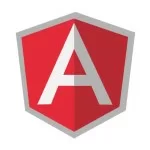New Features in Angular 17 You Need to Know About
Angular 17 is here! This exciting new release brings a wave of improvements for developers. From streamlined coding to enhanced performance, Angular 17 offers features that will make your web development experience smoother and faster. Let’s dive into some of the key features you need to know about!
Angular 17 brings a fresh set of features designed to make your life as an Angular developer easier and more productive. Let’s explore some of the most exciting ones in more detail:
1. Declarative Control Flow (Experimental)
Imagine writing control flow logic directly in your templates! This might sound like a dream, but Angular 17 introduces a new experimental syntax for control flow using keywords like @if, @for, and @switch. This offers several benefits:
- Cleaner Templates: Instead of having complex logic within your templates using directives like
*ngIfand*ngFor, you can now express the logic directly. This makes your templates easier to read and understand at a glance. - Separation of Concerns: By keeping control flow logic within the template, you can separate it from your component code. This leads to a more organized codebase and potentially fewer bugs.
Here’s an example:
Previously, you might have used *ngIf to conditionally display a welcome message:
1 2 3 | <div *ngIf="isLoggedIn"> Welcome, {{ username }}!</div> |
With declarative control flow, you can write:
1 2 3 | <div *@if="isLoggedIn"> Welcome, {{ username }}!</div> |
This is a simpler and more intuitive way to achieve the same result.
Note: Declarative control flow is still under development, but it’s a promising feature that could significantly impact how you write Angular templates.
2. Improved TypeScript Support
Angular 17 embraces the latest advancements in TypeScript (version 4.9.3 or higher). This means you can leverage features like:
- Stronger Type Checking: TypeScript helps catch errors early in the development process. With the newer version, type checking becomes even more robust, leading to fewer bugs and a more reliable codebase.
- Better Memory Leak Handling: TypeScript helps identify potential memory leaks in your code. With Angular 17’s support for the latest version, you can be more confident that your application won’t suffer from memory issues.
- Smoother Code Completion: Imagine getting helpful suggestions as you write your TypeScript code. The improved support for TypeScript in Angular 17 can provide better code completion, making development faster and more efficient.
Overall, by embracing the latest TypeScript features, Angular 17 empowers you to write cleaner, more maintainable, and bug-free code.
3. Faster Builds with esbuild
Angular 17 utilizes esbuild, a blazing-fast JavaScript bundler, for its build process. This translates to significantly faster build times, especially for larger projects. Here’s what this means for you:
- Quicker Development Cycles: Faster builds mean you can iterate on your code changes quicker. This allows you to experiment, test, and improve your application more efficiently.
- Improved Workflow: Waiting for long build times can be frustrating. With esbuild, you can spend less time waiting and more time coding. This can significantly improve your development workflow.
esbuild’s speed boost is a welcome change for Angular developers, especially those working on large and complex applications.
4. Streamlined Server-Side Rendering (SSR)
Server-side rendering (SSR) is a technique that improves initial page load times and SEO for your web application. Angular 17 offers optimizations for SSR, making it even more efficient:
- Faster Initial Load: With the optimizations in Angular 17, your application’s initial page load on the server will be faster. This leads to a better user experience, especially for users on slower connections.
- Enhanced SEO: Search engines often rely on the initial server-rendered content to understand your application. By improving SSR performance, you can potentially improve your application’s search engine ranking.
If you’re building an application that relies heavily on SEO or requires a seamless first impression for users, Angular 17’s SSR improvements can be a game-changer.
5. Laying the Groundwork for Smoother Animations (Experimental)
Animations can add a touch of polish and interactivity to your Angular application. Angular 17 introduces an experimental View Transitions API, which paves the way for creating smoother and more engaging animations between views:
- Polished User Experience: With the View Transitions API, you can create high-quality animations that enhance the user experience of your application. Transitions between views can feel more natural and visually appealing.
- A Glimpse into the Future: While still under development, the View Transitions API offers a glimpse into the future of animations in Angular. It provides a foundation for building more complex and dynamic animations in upcoming versions.
Wrapping Up
Angular 17 is a significant step forward for building modern web applications. With its focus on improved developer experience, performance, and user experience, this release offers a compelling set of features for developers of all levels. If you’re looking to build high-performance web applications with a focus on developer experience, Angular 17 is a framework worth considerin


